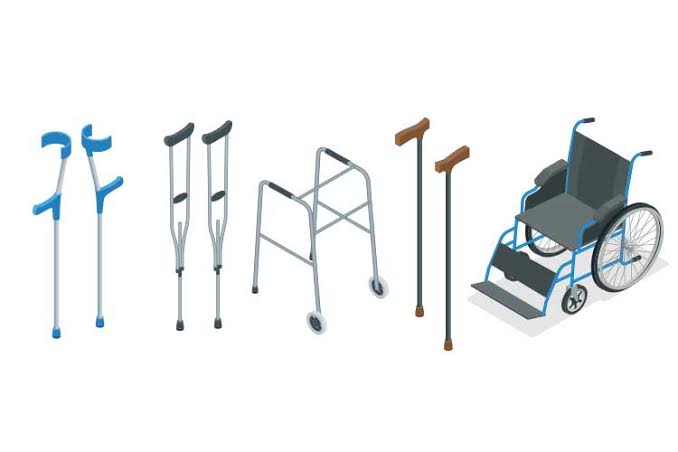Maintaining an active lifestyle is essential for overall health and well-being, but mobility challenges can pose significant obstacles. Mobility aids play a vital role in helping individuals regain their independence and confidence. These tools make daily activities safer and more manageable. This article examines various types of mobility aids and provides tips for selecting the right one for your needs.
Contents
What Are Mobility Aids?
Mobility aids are devices designed to assist individuals who face movement difficulties due to age, injuries, or medical conditions. These tools offer support and stability, making it easier for users to navigate their surroundings both indoors and outdoors. By enhancing mobility, these aids help individuals maintain an active and fulfilling lifestyle.
Common Types of Mobility Aids
- Canes
Canes are lightweight and easy-to-use tools that provide balance and stability for those with mild mobility issues.
- Single-Point Canes: Suitable for basic support and improved stability.
- Quad Canes: Feature a wider base for added support, especially on uneven surfaces.
- Folding Canes: Convenient for travel and storage.
Canes often feature ergonomic handles and adjustable heights to ensure user comfort.
- Walkers
Walkers provide greater stability than canes, making them ideal for individuals who require additional support.
- Standard Walkers: Have rubber-tipped legs for secure traction.
- Two-Wheel Walkers: Allow users to push the walker without fully lifting it.
- Rollator walkers: Come with wheels, hand brakes, and a seat integrated for added convenience and comfort.
Walkers are versatile tools suitable for both indoor and outdoor use.
- Wheelchairs
Wheelchairs offer essential mobility support for those with significant movement limitations. You can choose from manual or electric models.
- Manual Wheelchairs: Cost-effective and suitable for temporary or occasional use.
- Power Wheelchairs: Provide advanced features and are ideal for long-term needs.
Modern wheelchairs feature customizable seating and intuitive controls for enhanced comfort and usability.
- Mobility Scooters
Mobility scooters are motorized devices that help individuals travel longer distances with ease.
- Three-Wheel Scooters: Compact and easy to maneuver in confined spaces.
- Four-Wheel Scooters: Offer increased stability, making them suitable for uneven terrain.
Many scooters come with storage compartments, adding convenience for errands and outings.
- Crutches
Crutches are essential for individuals recovering from leg injuries or surgeries. They help redistribute weight and reduce strain on affected areas.
- Underarm Crutches: Provide significant support and are simple to use.
- Forearm Crutches: Offer enhanced mobility and control for long-term users.
Proper adjustment is key to ensuring comfort and preventing additional strain.
- Stairlifts
Stairlifts are motorized chairs designed to help users move between floors in multi-level homes. They are especially beneficial for those with limited lower-body strength.
Features such as padded seats, safety belts, and remote controls enhance their usability and safety.
- Lift Chairs
Lift chairs assist users in transitioning between sitting and standing positions. Their motorized systems reduce joint strain, making them a great choice for seniors and individuals with arthritis.
Lift chairs come in various designs and sizes, offering exceptional comfort while complementing your home decor.
Benefits of Using Mobility Aids
Mobility aids do more than facilitate movement; they offer numerous benefits that enhance quality of life:
- Enhanced Safety: Minimize the chances of falls and accidents.
- Greater Independence: Decrease reliance on caregivers for assistance.
- Boosted Confidence: Enable users to participate in social and recreational activities.
- Pain Management: Alleviate stress on joints and muscles.
- Customization Options: Available in various designs to suit individual preferences and requirements.
Choosing the Right Mobility Aid
Choosing the right mobility aid requires a thorough assessment of your individual needs and situation. Below are a few steps to help guide your decision-making process:
- Assess Your Requirements: Decide on the amount of support you need. A cane may suffice for minor balance issues, while a walker, wheelchair, or scooter may be necessary for more extensive needs.
- Consider Your Environment: Opt for an aid that fits your surroundings. For example, rollator walkers are versatile for both indoor and outdoor use.
- Focus on Comfort: Look for ergonomic designs and adjustable features to ensure a proper fit.
- Check Weight Capacity: Ensure the device can safely accommodate your weight.
- Set a Budget: Mobility aids come in a wide price range, so balance your financial considerations with the features you need.
Tips for Safe Use of Mobility Aids
To get the most out of your mobility aid, follow these safety practices:
- Learn Proper Operation: Familiarize yourself with the correct way to use your device.
- Inspect Regularly: Check for signs of wear and address issues promptly.
- Maintain Cleanliness: Keep your aid clean to extend its lifespan.
- Seek Professional Guidance: Consult a healthcare provider or physical therapist for personalized advice on selecting and using mobility aids.
Conclusion
Mobility aids empower individuals to maintain active and independent lifestyles despite physical challenges. From canes and walkers to wheelchairs and scooters, these tools cater to diverse needs and preferences. By choosing the right aid and using it correctly, you can enhance your safety, confidence, and overall well-being.



Can you be more specific about the content of your article? After reading it, I still have some doubts. Hope you can help me.